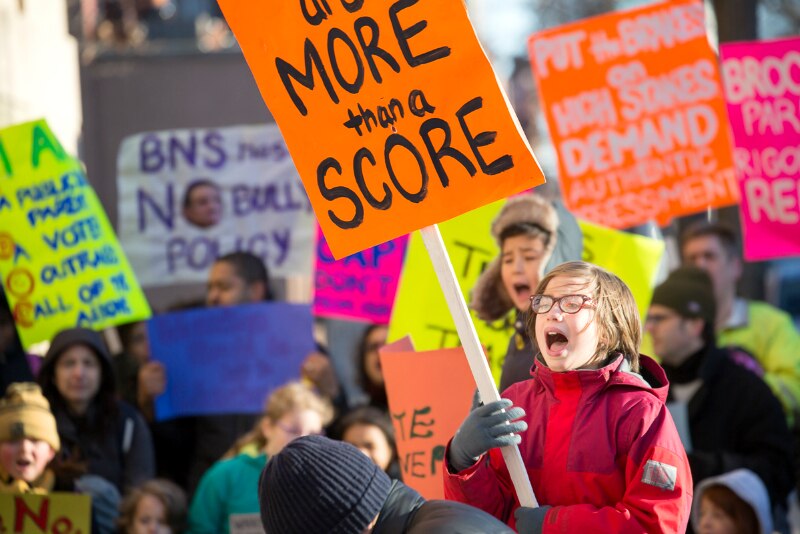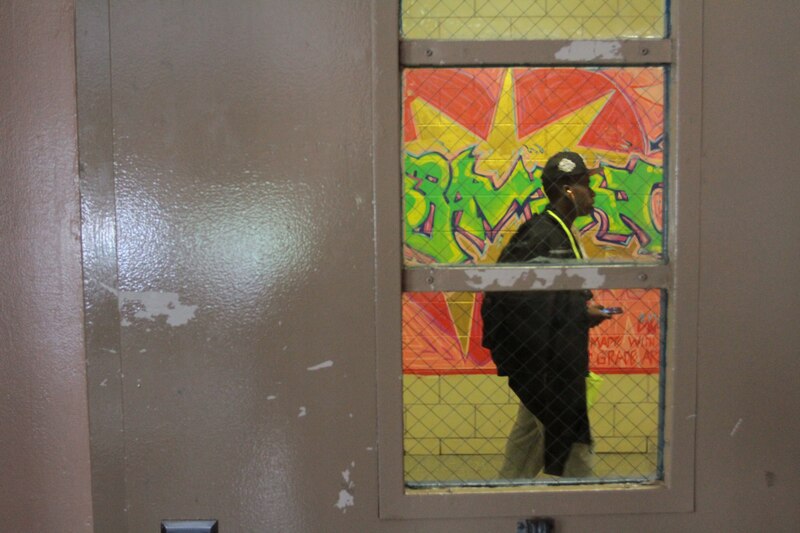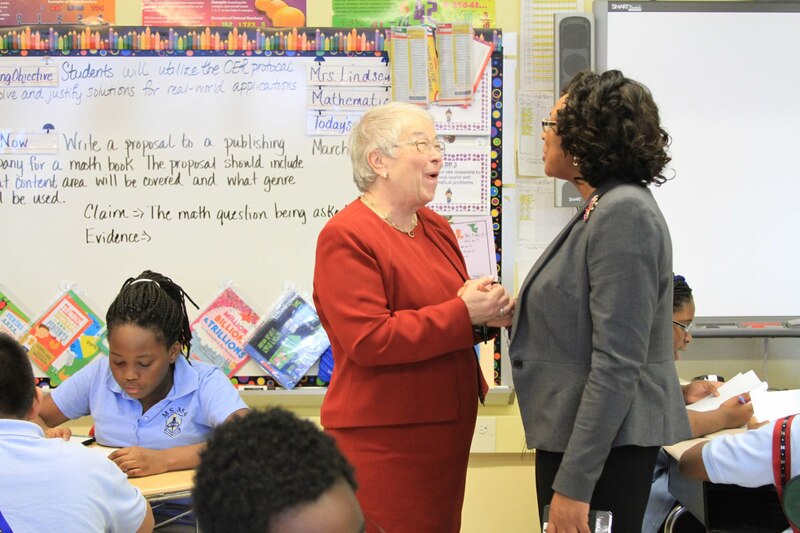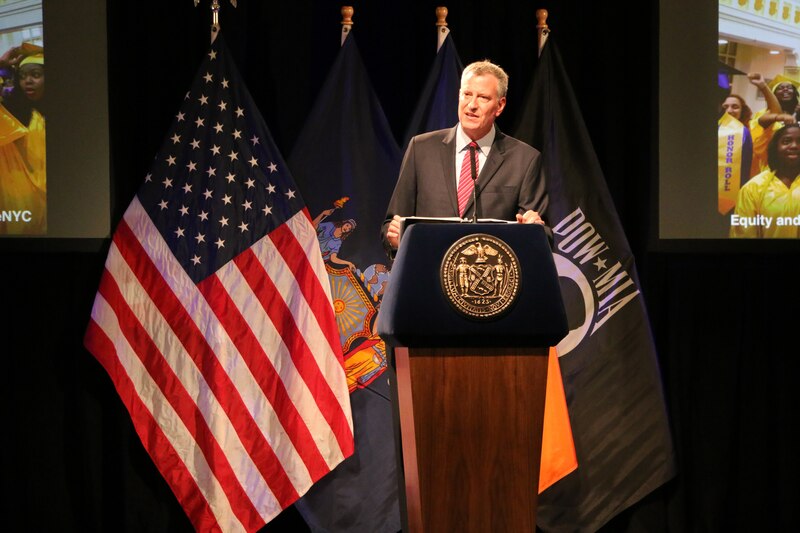While some years have brought a flood of changes to New York City schools, 2015 was defined more by waiting and watching.
How would the city put its plan to turn around nearly 100 long-struggling schools into action? What should, or could, be done to integrate one of the most segregated school districts in the country? Would the aggressive push to limit testing yield results?
Some of those questions were answered. But many of the moments that defined 2015 — from Mayor Bill de Blasio’s new set of education goals to his fight to keep control of the city’s schools — will continue to hold our attention through the new year.
Here’s a look back at the stories that got New York talking this year, and a glimpse of what’s to come.
1. The city’s effort to turn around 94 struggling schools started year two and faced fresh scrutiny.
2015’s most-read stories
- As opt-out numbers grow, Arne Duncan says feds may have to step in
- Merryl Tisch: Opting out of the state exams is a ‘terrible mistake’
- New York ditches controversial test-maker Pearson
- In big shift, Regents vote to exclude state tests from teacher evals until 2019
- At a struggling school, an anonymous letter to a new principal sparks a backlash
- Yes, it’s time to embrace cell phones in class
Here are the 62 New York City schools that could be taken over by outside groups - Eight top 10s from New York City’s 2015 test scores
Why New York City doesn’t have a teacher shortage - After rancorous debate, lawmakers pass big changes to evaluations
2015 was when Mayor Bill de Blasio’s big plans for the city’s lowest-performing schools took shape.
He first announced those plans last November: A “Renewal” program that would give schools three years to make real academic improvements after receiving a flood of support. The questions that followed were, what would those resources look like, and would the strategy work?
By spring, some schools had gotten leadership coaches and funding for extra training and after-school programs. Other schools were still waiting for support.
One of those schools was Brooklyn Generation School, a high school with just a 50 percent graduation rate in 2014. There, Chalkbeat found that the city’s community-schools push was making a real difference — but academic changes appeared far off.
The pressure for schools to show quick results grew as the program benefited from a surge in federal and state funding, taking its price tag to nearly $400 million. That funding helped community organizations make their presence felt in the schools.
Still, certain aspects of the program felt like moving targets.
The improvement goals for the schools turned out to be nearly impossible to track down. (That changed earlier in December.)
The city also announced that it would move to close three struggling Brooklyn schools — two from the Renewal program. They will be the first district schools shuttered by the de Blasio administration, which has tried to distance itself from the Bloomberg administration’s own school closures.
There are many other under-enrolled and persistently struggling schools on and off the Renewal list, leaving the city with decisions to make in 2016 about their futures.
2. The conversation about how to integrate one of the nation’s most segregated school systems grew louder.
Segregation and diversity in New York City schools have been making headlines since classes started back up this fall.
Two proposals to change school-zone lines in Brooklyn and on the Upper West Side got heated. Meanwhile, the de Blasio administration made its political constraints clear, with Mayor de Blasio saying that the city has to “respect families who have made a decision to live in a certain area” because of a school.
On the Upper West Side, strong parent backlash caused the city to table the rezoning. The city, however, did make moves to allow seven elementary schools to change their admissions policies to enroll a diverse mix of students.
What’s next? We laid out the big questions here.

3. The opt-out movement grew faster than predicted, sparking more changes to teacher evaluations.
It was a rebuke officials couldn’t look away from.
Across New York, 20 percent of eligible students opted out of taking state exams this year. The share was smaller in New York City, but more than 7,900 city students refused to take the tests — a more than threefold increase over last year.
The backlash came from parents upset that state exams were narrowing the curriculum for their children and that scores were being unfairly used to rate teachers. And in a dramatic reversal from the start of the year — when Gov. Andrew Cuomo called for state tests to contribute more to teacher evaluations — New York teachers and principals now won’t have state tests count in their evaluations at all for four years. (Here’s the full breakdown of what you need to know about the changes.)

4. “Zero tolerance” took another hit, and many students began bringing cell phones to class, as school safety got a fresh look.
Student suspensions took another significant tumble, dropping 17 percent as the city pushed schools to shift to a different approach to discipline. (Other numbers changed less: schools continued to suspend black students and those with disabilities at disproportionately high rates.)
Suspensions have been dropping since 2012, and the de Blasio administration has made it clear that it wants them to keep falling. Officials promised more changes to the city’s discipline code last year, which were unveiled in February. They require principals to get approval before suspending students for insubordination, and banned a more serious type of suspension for minor altercations.
The city also lifted the longtime ban on students bringing cell phones to school that had grown increasingly unpopular among parents, students, and even some teachers.
Up next: The city and the police department are taking a closer look at school metal detectors to see where they might not be needed anymore — a change that would change the look and feel of a lot of the city’s campuses.

5. Chancellor Fariña overhauled a lot of the education bureaucracy.
In a reversal of structures created by the Bloomberg administration, Chancellor Carmen Fariña overhauled the behind-the-scenes structure that supports the city’s schools this summer. The 55 networks, which had each served schools in various parts of the city, were mostly replaced by seven regional centers and bigger staffs for Fariña’s superintendents.
Fariña has said the new system should bring more consistency across the city’s schools, make it easier for parents to get help if they need it, and create a clearer chain of command.
What has it meant for principals, and how will the changes redefine their jobs? We’ll be watching closely in 2016.

6. Mayor de Blasio set his sights high.
After the de Blasio administration spent most of its first year and a half focused on rapidly expanding pre-kindergarten (now up to 68,500 students) and its Renewal schools, the mayor laid out an ambitious new set of goals in September.
The finish lines are far off, though. Over the next decade, the city plans to introduce computer science instruction to all schools and make sure eighth-grade students have the chance to take algebra.
Giving all eighth-graders access to algebra has stumped policymakers across the country in the past, but experts say de Blasio may be successful by seeking a middle ground where algebra courses are universally available, but not required.
De Blasio’s most pressing education goal of 2016, though, will be to retain control of New York City’s schools. This spring, state lawmakers granted him just a one-year extension of mayoral control — and continuing the city’s plans for Renewal schools, discipline, computer science, and a lot more depend on that agreement.
